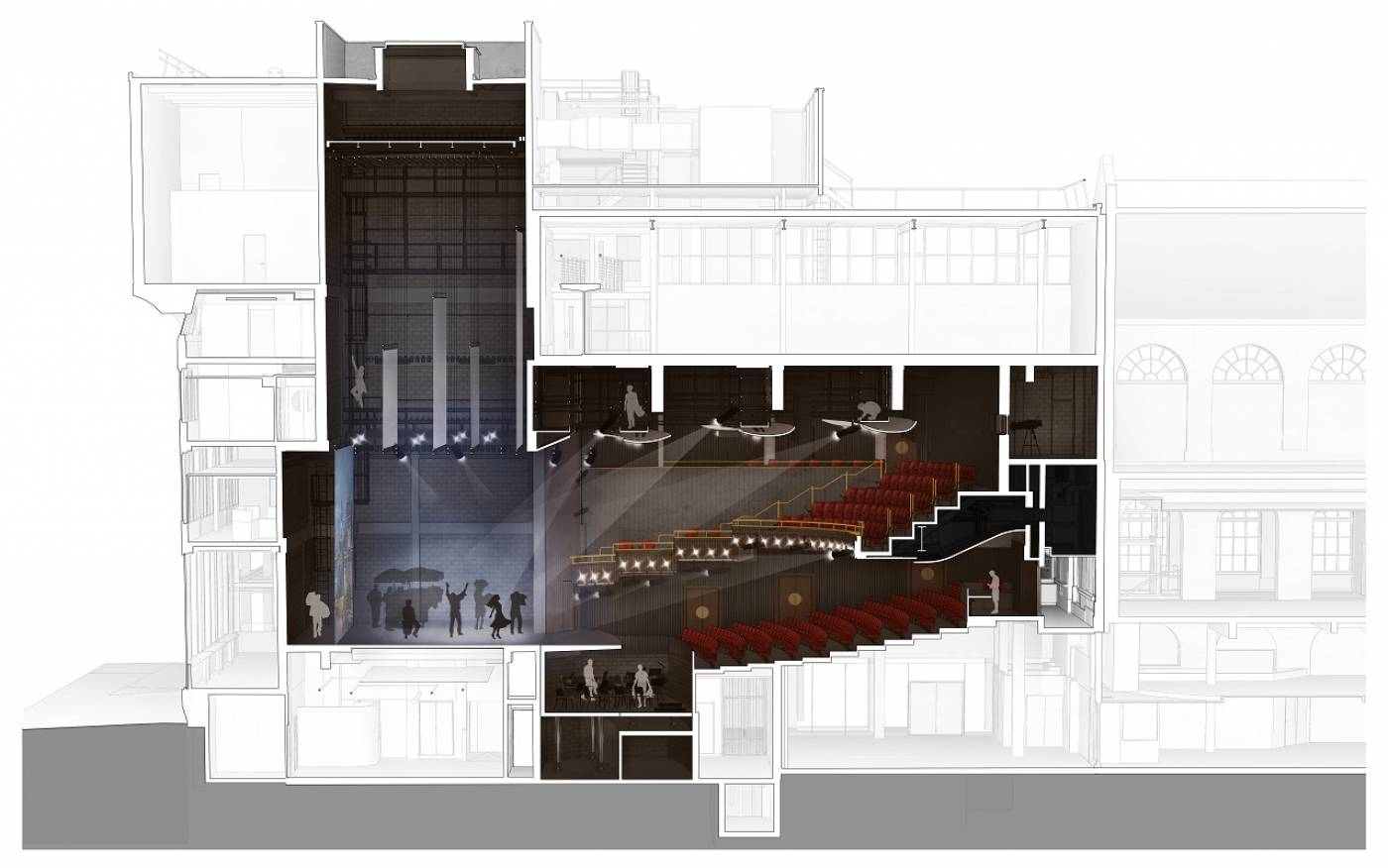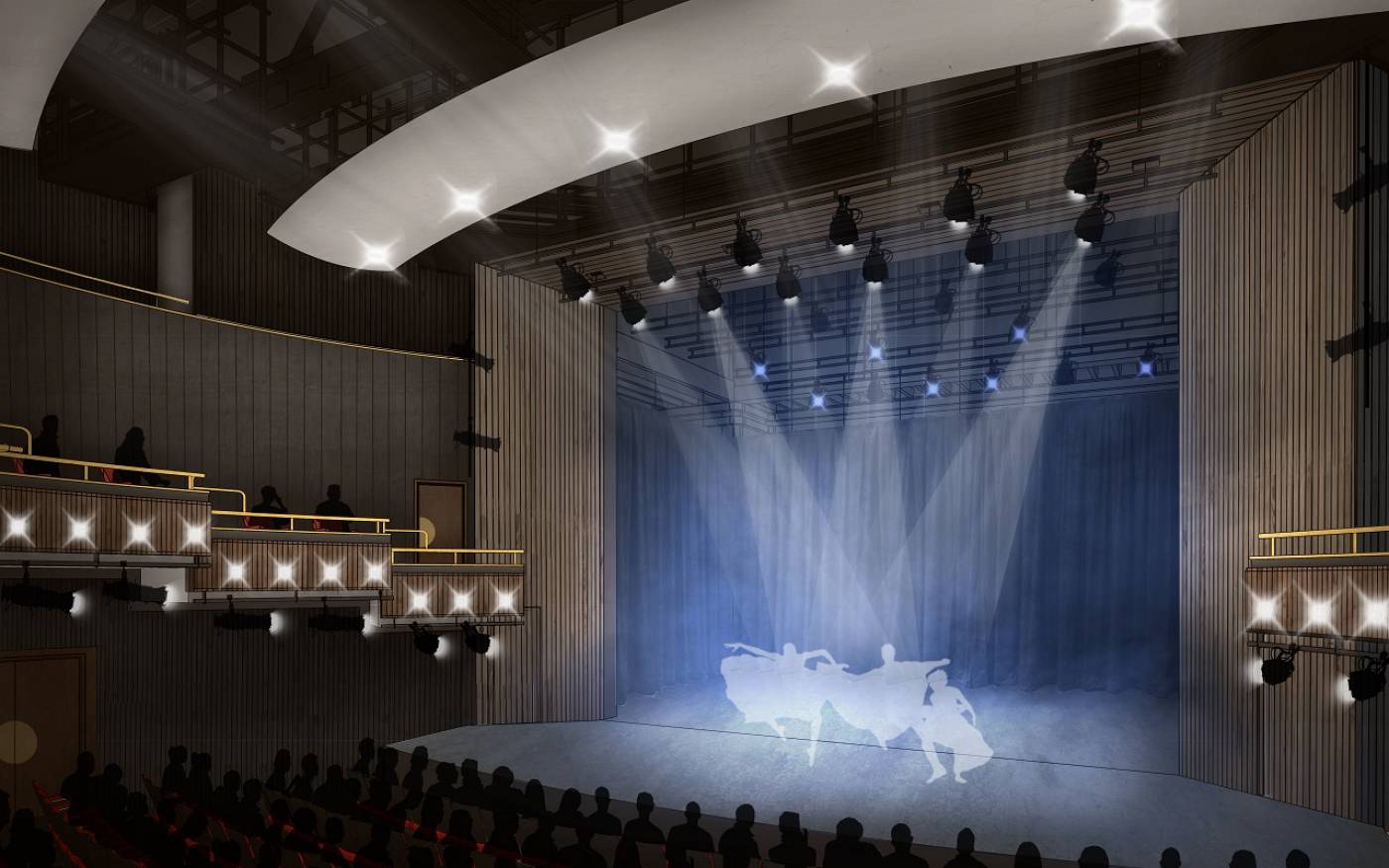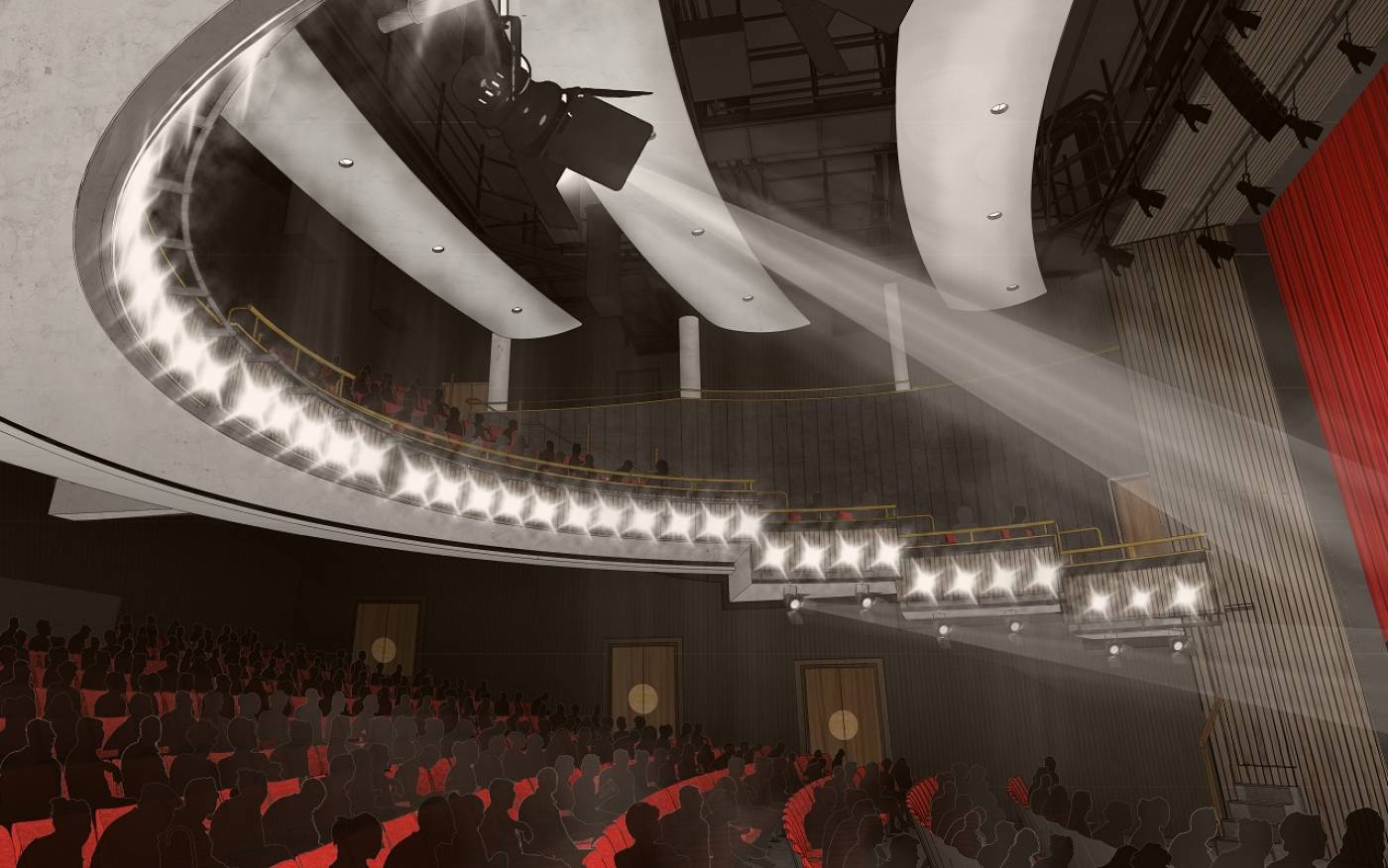The redevelopment of UCL’s Bloomsbury Theatre has presented a major opportunity to improve energy efficiency and wellbeing for building users.
Sitting at the heart of UCL’s campus, the 535-seat Bloomsbury Theatre is used by UCL students for 12 weeks a year, with a range of comedy, opera and music events for the remainder of the time.
The existing incandescent lighting scheme at the Bloomsbury Theatre dated back to its opening in 1968.
Although this lighting offered the warmth and dimming capability that the theatre needed, it had become a drain on energy and resources.
The incandescent lamps ‘popped’ so often that the theatre maintenance staff spent an average of four hours a week changing the dead bulbs.
Previously, the theatre’s 114 incandescent lamps (drawing combined nearly 7kw) used up to almost 100kWh of electricity a day.
The project was managed under the Ska HE rating system, which UCL helped to develop. This helped to identify low-impact products and materials, as well as opportunities for improved waste management. The teak slats which were removed from the auditorium have been reused for a variety of purposes ranging from furniture to sculpture and even a staircase.
 Close
Close




